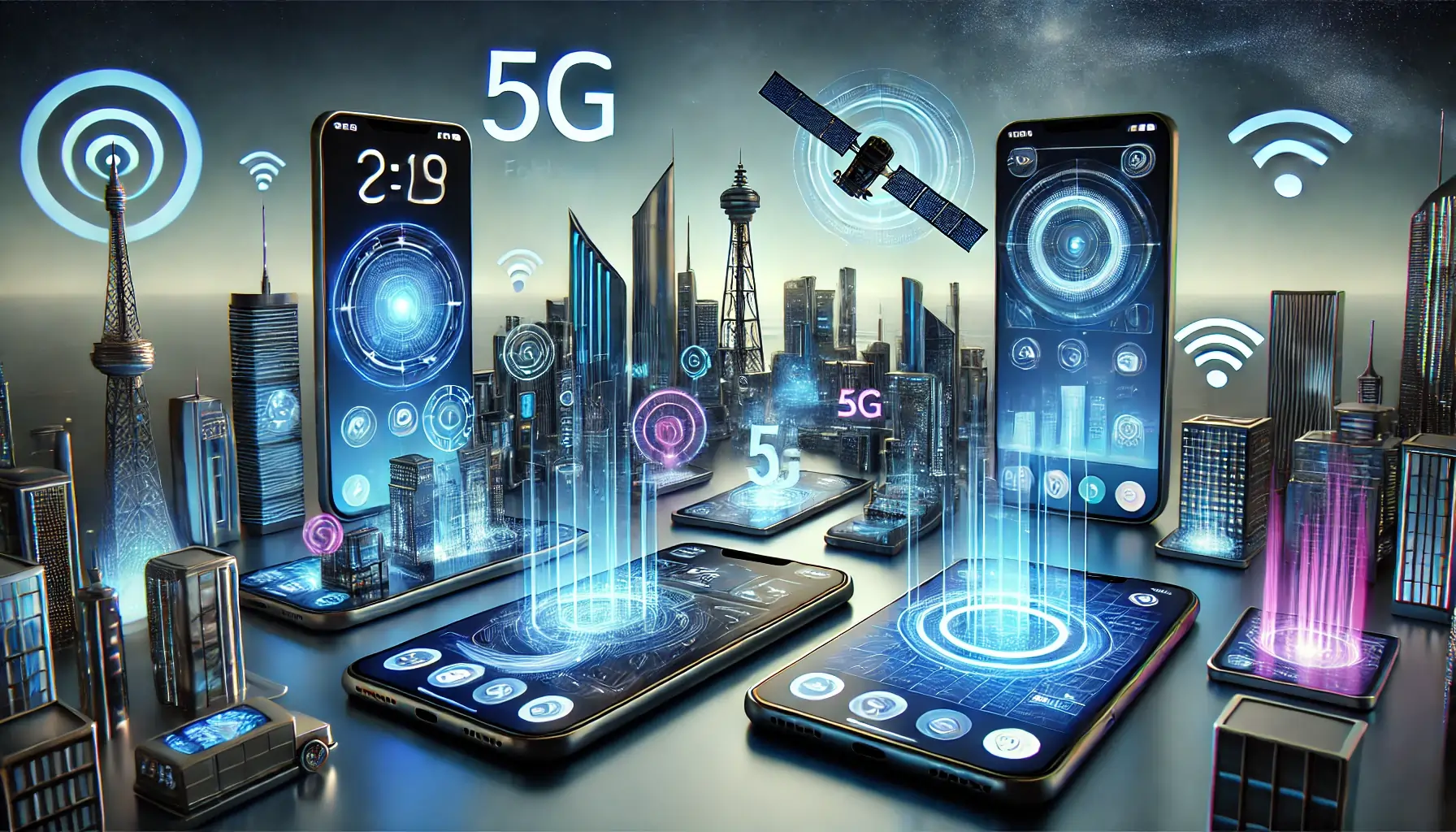In recent years, smartphones have evolved into essential tools for everyday life, combining communication, productivity, entertainment, and so much more into one compact device. These technological marvels are not only ubiquitous but continually innovating, reshaping the ways we interact with technology and each other. As we look toward the future, the trajectory of smartphone development is poised to change how we live, work, and play.
This article explores the potential future of smartphones, analyzing current trends and forecasting upcoming innovations that could transform the industry and the devices we use.
1. The Evolution of Smartphones
Before delving into future innovations, it’s essential to appreciate how far smartphones have come in the past few decades. The evolution of smartphones can be broken into several distinct phases:
- Feature phones (Pre-2007): These devices were primarily focused on calls, texts, and basic media consumption.
- The rise of smartphones (2007-2012): With the introduction of the iPhone and Android devices, phones began incorporating touchscreens, mobile apps, and mobile internet access.
- Smartphone maturity (2013-2020): Over this period, smartphones became more powerful, with better cameras, larger displays, and increasing integration with other technologies like AI and cloud services.
As the hardware and software in smartphones advanced, they became central to modern life. However, the future promises even more radical shifts.
2. Foldable and Rollable Displays
The idea of foldable displays has captured the imagination of the tech industry for some time. Devices like the Samsung Galaxy Z Fold and Z Flip, along with the Huawei Mate X, represent the initial forays into foldable screens. Despite some initial technical difficulties, such as fragility and cost, these phones demonstrate the potential of a new form factor that blends the portability of a smartphone with the larger display real estate of a tablet.
Rollable Displays
While foldables are already on the market, rollable displays are the next step. Brands like LG and Oppo have already showcased prototypes of rollable devices. Rollable displays allow for a dynamic size adjustment, where users can roll out more screen space as needed. This could revolutionize productivity by offering a compact device for daily use that can expand into a larger screen for tasks such as reading, watching videos, or working.
The Future
In the next decade, foldable and rollable displays will likely become more mainstream as manufacturers improve durability and cost. We can expect thinner, lighter devices with more advanced materials like graphene making these displays highly flexible and resilient. Eventually, smartphones could offer a near-seamless transition between phone, tablet, and even laptop functionalities, all in a single, ultra-portable form factor.
3. 5G and Beyond: Revolutionizing Connectivity
5G networks are currently being rolled out globally, promising speeds up to 100 times faster than 4G LTE. This next-generation connectivity will significantly enhance the way smartphones are used.
Impact of 5G on Smartphones
- Enhanced mobile gaming: 5G’s low latency and high bandwidth will enable near-instantaneous response times for multiplayer gaming, augmented reality (AR), and virtual reality (VR) experiences.
- Seamless video streaming: 5G will allow for uninterrupted 4K and 8K streaming, enabling users to consume high-quality content on the go.
- Cloud computing and storage: As cloud-based applications and storage become more efficient with 5G, smartphones could shift towards being cloud-powered, reducing the need for large internal storage.
Beyond 5G: 6G and Satellite Connectivity
As 5G becomes the standard, researchers are already working on 6G technology, expected to launch around 2030. 6G could bring speeds up to 100 times faster than 5G, enabling unprecedented data transfer rates, real-time communication for AI systems, and even the ability to power holographic displays on smartphones.
Moreover, satellite-based internet providers like SpaceX’s Starlink and Amazon’s Project Kuiper are working on global satellite internet coverage. Future smartphones might be equipped with satellite connectivity, ensuring that even in the most remote parts of the world, users will have internet access.
4. Artificial Intelligence (AI) Integration
AI is already a critical component of modern smartphones, with features like voice assistants, camera optimizations, and personalized content recommendations. However, the future will see AI playing an even more integral role.
AI-Powered Assistants
Future smartphones will be equipped with far more intelligent virtual assistants. AI advancements will enable devices to understand context better, predict user needs, and carry out complex tasks autonomously. For example, instead of merely responding to voice commands, future AI assistants will anticipate your schedule, adjust settings, and even provide personalized advice on tasks or activities.
AI in Cameras
Smartphone photography is another area poised to benefit from AI. Computational photography, already seen in devices like the Google Pixel, will become more sophisticated, with AI capable of making real-time decisions about lighting, focus, and framing to create professional-grade images. With the incorporation of AI, future smartphone cameras could mimic features of high-end DSLR cameras and automate editing processes such as color grading and exposure adjustments.
AI for Health Monitoring
As smartphones continue to integrate health sensors, AI will enable real-time monitoring of various health metrics, from blood sugar levels to ECG readings. AI algorithms could detect patterns that even trained physicians might miss, providing users with alerts and recommendations to improve their well-being. The potential for smartphones to transform into personalized health management devices is enormous, particularly with continuous advancements in AI.
5. Augmented Reality (AR) and Virtual Reality (VR)
AR and VR technologies have the potential to transform smartphones from simple content consumption devices to interactive platforms that blend the digital and physical worlds.
AR in Smartphones
Apple’s ARKit and Google’s ARCore are already laying the groundwork for widespread AR adoption. Future smartphones will likely come equipped with more advanced sensors and cameras, enabling more immersive AR experiences. From shopping to gaming to navigation, AR could become a routine part of how we use our smartphones.
For instance:
- Shopping and Retail: Imagine pointing your phone’s camera at a product in a store, and seeing real-time information, reviews, and pricing comparisons overlaid on the screen.
- Navigation: AR could provide enhanced navigation by superimposing arrows and street names onto your view of the world, making it easier to get around.
VR Integration
While AR enhances the real world, VR offers immersive experiences in entirely virtual environments. Currently, VR is often associated with dedicated headsets, but future smartphones might offer built-in VR capabilities with foldable displays that open into VR-compatible configurations.
As processing power improves, these devices will be capable of handling VR applications without the need for additional hardware. With developments in lightweight and compact wearables (such as VR glasses), smartphones will likely become the center of the virtual experience.
6. Biometric Security and Privacy
Security and privacy are becoming increasingly critical as smartphones store more personal and sensitive information. While fingerprint sensors and facial recognition are now common, the future holds even more advanced biometric security options.
Iris and Retinal Scanning
Iris scanning, already used in some devices, could become standard in future smartphones. It offers a highly secure form of biometric authentication, with every individual’s iris pattern being unique. Retinal scanning, another biometric method, scans the blood vessels at the back of the eye and could offer an even higher level of security.
Fingerprint Sensors Everywhere
While in-display fingerprint sensors are already in use, the future might see entire screens becoming fingerprint scanners. Users could touch anywhere on the display to unlock their device, improving both convenience and security.
Advanced Face Recognition
Future face recognition technology will likely become more secure by using depth sensors, thermal imaging, and even infrared technology to map facial features in 3D, making it harder to spoof or bypass.
7. Battery Technology and Charging Innovations
Battery life has always been a limiting factor for smartphones, with users often needing to charge their devices daily or even multiple times a day. However, several innovations could revolutionize how smartphones are powered in the future.
Solid-State Batteries
Solid-state batteries are expected to replace the lithium-ion batteries used in current smartphones. They offer several advantages, including faster charging, higher energy density, and improved safety by reducing the risk of overheating and explosions.
Graphene Batteries
Graphene batteries are another potential game-changer. Graphene is a super-conductive material that can significantly speed up charging times and extend battery life. A future smartphone could charge fully in a matter of minutes and last days or even weeks on a single charge.
Wireless and Over-the-Air Charging
While wireless charging is already available, the next step is true over-the-air charging. This technology would allow devices to charge from a distance without needing to be placed on a charging pad. Companies like Energous are working on “WattUp” technology, which aims to deliver power over several feet.
In the future, your smartphone could continuously charge as long as it’s within a certain range of a charging hub, eliminating the need for cables or charging pads altogether.
8. Environmental Sustainability
As environmental awareness grows, the future of smartphones will also involve increased focus on sustainability.
Eco-Friendly Materials
Manufacturers are already experimenting with recycled materials in their devices. The future could see smartphones made entirely from renewable or recycled components. Additionally, companies may develop biodegradable components, reducing e-waste and minimizing the environmental impact of discarded devices.
Modular Smartphones
Modular smartphones, like the now-defunct Project Ara by Google, allow users to replace individual components (such as the camera, battery, or screen) without discarding the entire device. While the concept has faced challenges, a modular design could make a comeback, driven by consumer demand for sustainability and longevity in their devices.
Energy-Efficient Devices
Future smartphones will likely become more energy-efficient, not just in terms of battery usage but also in how they are produced. Advances in energy-efficient displays, processors, and software optimizations will reduce the carbon footprint of smartphone production and usage.
9. Quantum Computing and Smartphone Processing Power
Although quantum computing is still in its infancy, it holds enormous potential to revolutionize processing power. Quantum smartphones are not likely in the near future, but as quantum computing advances, we could see elements of quantum technology incorporated into mobile processors.
This could lead to breakthroughs in encryption, data processing, and problem-solving capabilities that are beyond the reach of classical computers. Smartphones powered by quantum technology could perform complex computations in milliseconds, opening up new possibilities in AI, AR, VR, and more.
10. Smartphones as the Hub for the Internet of Things (IoT)
The IoT ecosystem is growing rapidly, with devices like smart home appliances, wearables, and even smart cities becoming connected. In the future, smartphones will likely act as the central hub for managing and interacting with these IoT devices.
Seamless Integration with Smart Homes
Imagine a world where your smartphone automatically adjusts your home’s temperature, controls your appliances, and monitors your security system, all through voice commands or AI-based automation. Future smartphones will likely have deeper integration with IoT ecosystems, enabling seamless control over everything from your lighting to your car.
Wearables and Implantables
As wearables become more sophisticated, smartphones will serve as the control center for these devices. Future wearables could include everything from advanced fitness trackers to AR glasses and even implantable technology that monitors health or enhances communication.
11. The Death of the Smartphone?
Finally, one of the most intriguing possibilities is that the smartphone as we know it may eventually become obsolete. As new technologies emerge, smartphones could be replaced by more advanced devices like smart glasses, wearables, or even brain-computer interfaces.
Smart Glasses and Beyond
Companies like Apple and Google are already investing in smart glasses, which could eventually replace the smartphone entirely. Instead of interacting with a screen, users might access information, communicate, and navigate the world through augmented reality overlays displayed on smart glasses.
Brain-Computer Interfaces
Perhaps the most futuristic concept is brain-computer interfaces (BCIs), where devices are controlled directly through neural input. Companies like Neuralink are developing technology that allows for direct communication between the brain and computers. If BCIs reach a point of mass adoption, smartphones could become a relic of the past, replaced by devices that integrate directly with our minds.
Conclusion
The future of smartphones is incredibly exciting, filled with potential innovations that will reshape how we interact with technology and the world around us. From foldable and rollable displays to AI integration, AR and VR, and even the possibility of smartphones becoming obsolete, the next decade will likely bring about a smartphone revolution.
While it’s impossible to predict exactly how these changes will unfold, one thing is certain: smartphones will continue to be at the forefront of technological advancement, pushing the boundaries of what’s possible and redefining our relationship with technology.
The future of smartphones is not just about faster processors or better cameras; it’s about creating a more connected, efficient, and immersive world for everyone. The only limit is the imagination of the engineers, designers, and visionaries shaping the next generation of smartphones.




